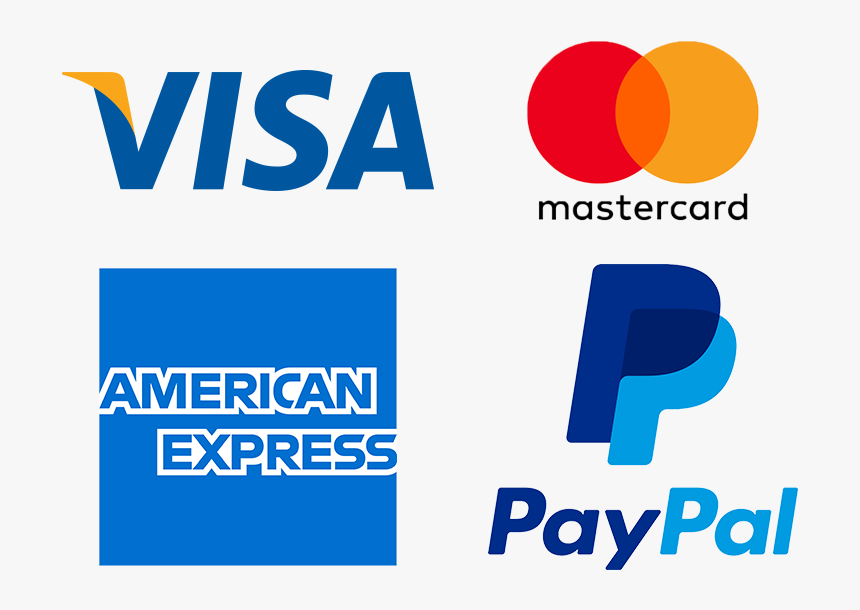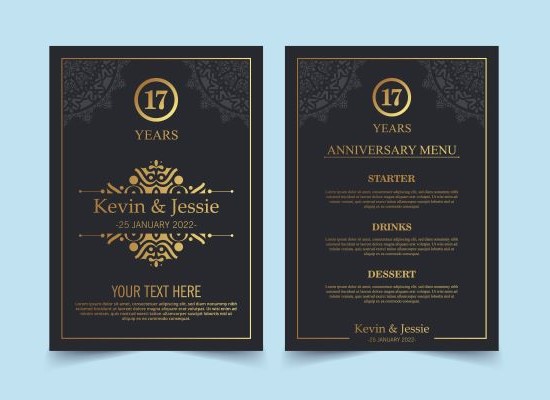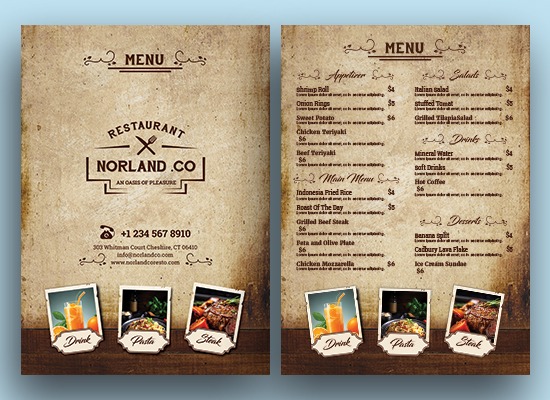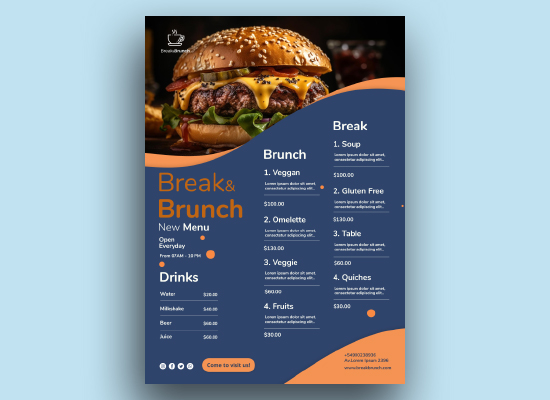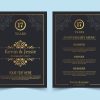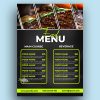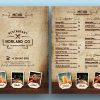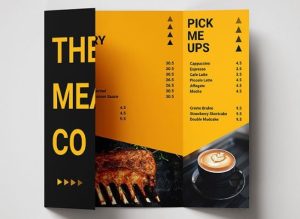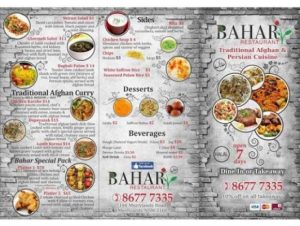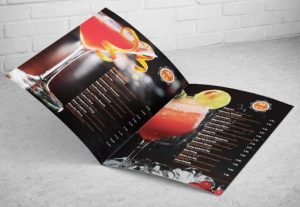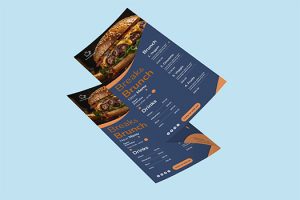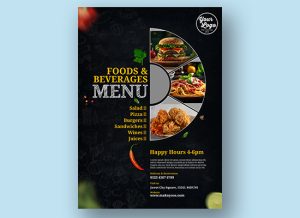Restaurant Menu
Please select artwork files:

Related Products
Additional Information
Design a standout restaurant menu. Stylish and clear, it highlights your dishes and enhances the dining experience with a professional touch.
Restaurant Menu: The Heart of Your Dining Experience
A restaurant menu is much more than a simple list of food and beverages. It serves as a critical communication tool that tells a story about your restaurant, sets customer expectations, and influences their dining choices. A well-designed menu can enhance the dining experience, create lasting impressions, and increase sales, while a poorly crafted one can leave customers confused or uninterested.
In this guide, we’ll explore the importance of a good restaurant menu, essential elements, design principles, and how the right menu can shape a customer’s overall experience.
Why a Restaurant Menu is Important
- First Impressions and Branding:
- A restaurant menu plays a significant role in shaping the first impression customers have of your establishment. The layout, color scheme, typography, and even the quality of the paper or digital display tell a lot about the restaurant’s atmosphere and quality.
- The menu reflects your brand’s identity and theme. For example, a fine dining restaurant may opt for an elegant and minimalist design, while a casual burger joint may choose bold, playful fonts and imagery to reflect a laid-back vibe.
- From the moment customers open the menu, they begin to form expectations about the quality of food, service, and the overall experience.
- Influences Customer Choices:
- The way items are listed, described, and presented can greatly influence customer choices. Strategic placement of high-margin dishes, descriptive language that tempts the taste buds, and thoughtful arrangement of options help guide customers toward ordering specific items.
- Studies have shown that people tend to read menus in a specific way, often focusing first on the top-right section. This “Golden Triangle” is an ideal spot to place popular or high-margin dishes, subtly encouraging diners to choose them.
- Enhances the Dining Experience:
- A good restaurant menu should be easy to read and navigate, enhancing the overall dining experience. Customers should be able to quickly find the types of dishes they are interested in without feeling overwhelmed by too many choices or distracted by cluttered design.
- A well-organized menu helps set clear expectations and makes it easier for customers to make informed decisions, leaving them satisfied with their meal choice.
- Supports Operational Efficiency:
- A thoughtfully designed menu can improve a restaurant’s operations by streamlining the preparation process. By curating a balanced menu that offers a variety of options without overwhelming the kitchen, you help your staff manage food preparation and service more efficiently.
- Restaurant menu design also allows you to manage inventory more effectively, reducing food waste by strategically highlighting dishes that use similar ingredients across multiple items.
- Marketing and Upselling:
- Your menu is an ongoing marketing tool. By highlighting special dishes, limited-time offers, or chef’s recommendations, you can promote new items or high-profit dishes.
- It also gives you the opportunity to upsell by pairing appetizers with mains, suggesting drinks or desserts, or offering combo deals.
Essential Elements of a Restaurant Menu
- Menu Categories:
- Clearly divided sections such as appetizers, main courses, desserts, and beverages help customers easily navigate the menu. More specific categories like vegetarian, vegan, gluten-free, or kids’ menus can also be added to cater to different preferences and dietary needs.
- Grouping items logically ensures that customers can quickly find what they’re looking for without having to search through the entire menu.
- Item Descriptions:
- Each dish on the menu should include a clear yet enticing description. Descriptive language is crucial in a restaurant menu, as it can significantly influence a customer’s decision. The description should highlight key ingredients, flavors, and preparation methods, giving customers a sense of what to expect.
- Avoid being too vague, but also steer clear of overcomplicated descriptions. A balance between simplicity and creativity can help paint a picture of the dish without overwhelming the customer with too much information.
- Pricing:
- Prices should be clearly displayed next to each menu item. Transparent pricing builds trust and allows customers to make decisions based on their budget.
- Some restaurant menu opt for creative pricing techniques, such as listing prices without currency symbols or using smaller fonts for prices, to subtly reduce price-consciousness and encourage customers to focus on the dish itself rather than the cost.
- Special Offers and Promotions:
- If your restaurant offers daily specials, limited-time seasonal dishes, or combo deals, these should be highlighted on the menu. This not only keeps the menu dynamic and fresh but also helps to boost sales of certain items.
- Using visual elements like boxes or icons can draw attention to special offers and make them stand out from the rest of the menu.
- Dietary Information:
- With increasing demand for dietary flexibility, it’s essential to provide clear indications for dishes that meet specific dietary requirements. Icons for vegetarian, vegan, gluten-free, or allergen-friendly items can help customers make quick, informed choices, improving their overall dining experience.
- Additionally, offering alternatives or customizable options, like substituting gluten-free pasta or dairy-free sauces, can attract a wider range of customers.
Design Principles for a Restaurant Menu
- Visual Hierarchy:
- A well-organized menu uses visual hierarchy to guide the reader’s eye and prioritize important information. Key items, such as specials or high-margin dishes, can be placed in prime locations like the top-right corner or set apart with larger fonts or bold colors.
- Use headings and subheadings to break up sections and make the menu easier to scan. This ensures customers can find what they’re looking for without feeling lost or overwhelmed.
- Readable Typography:
- Legibility is crucial for any menu. Avoid overly decorative fonts that are difficult to read, especially in low-light environments such as restaurants. Stick to clear, clean fonts for the main body text, and use more stylized fonts sparingly for headings or special offers.
- The font size should be large enough for all customers to read comfortably, including those with visual impairments. A common mistake is to choose a small font in an effort to fit more information on the page, but this can frustrate customers and detract from their experience.
- Color and Design Elements:
- The colors you choose should align with your restaurant’s branding and overall atmosphere. Warm, earthy tones might work well for a rustic, farm-to-table restaurant, while sleek blacks and metallics might suit a high-end, contemporary dining establishment.
- Make sure the colors you choose for text and background offer enough contrast for readability. Use color strategically to highlight certain dishes or sections, but avoid overwhelming the design with too many competing elements.
- High-Quality Images (Optional):
- If you decide to include images of your dishes, make sure they are professionally shot and look appetizing. Poor-quality images can make even the most delicious food appear unappealing.
- Limit the use of images to avoid cluttering the menu, and focus on using them for highlighting signature dishes or specials.
- Durable Materials:
- For printed menus, consider the materials you use. High-quality paper or card stock reflects well on your brand and creates a better tactile experience for customers. Laminating menus can protect them from spills and wear, especially in high-traffic restaurants or casual settings.
- For restaurants using digital menus (via tablets or QR codes), ensure that the design is mobile-friendly and easy to navigate on smaller screens.
Types of Restaurant Menus
- A La Carte Menu:
- This menu lists items individually, allowing customers to order each dish separately. It’s common in fine dining or upscale restaurants, giving diners the flexibility to create their own meal by selecting individual appetizers, mains, sides, and desserts.
- Prix Fixe Menu:
- A Prix Fixe menu offers a set number of courses (e.g., three-course meal) at a fixed price. This is often used in fine dining or special event settings, providing a curated selection of dishes that highlight the chef’s skills.
- Table d’Hôte Menu:
- Similar to a Prix Fixe menu, this type offers a multi-course meal at a set price but often gives customers limited choices for each course. It’s typically more affordable and commonly used in casual dining settings or special menus like holiday meals.
- Specialty Menus:
- Specialty menus focus on a particular type of cuisine, dietary need, or event. Examples include vegetarian menus, brunch menus, seasonal menus, or tasting menus that offer a sample of several dishes.
Conclusion
A well-crafted restaurant menu is a powerful tool that goes beyond simply listing food items—it enhances customer experience, reflects the brand, drives sales, and supports efficient operations. By focusing on clear organization, thoughtful design, and strategic placement of dishes, your menu can play a central role in making your restaurant a success. Whether physical or digital, the menu should be a reflection of your restaurant’s unique identity, designed to entice, inform, and ultimately lead to satisfied customers.
Design a standout restaurant menu. Stylish and clear, it highlights your dishes and enhances the dining experience with a professional touch.
Get Your Quote
My Account
About Us
Our Products
Contact
Follow Us On
We Accept
